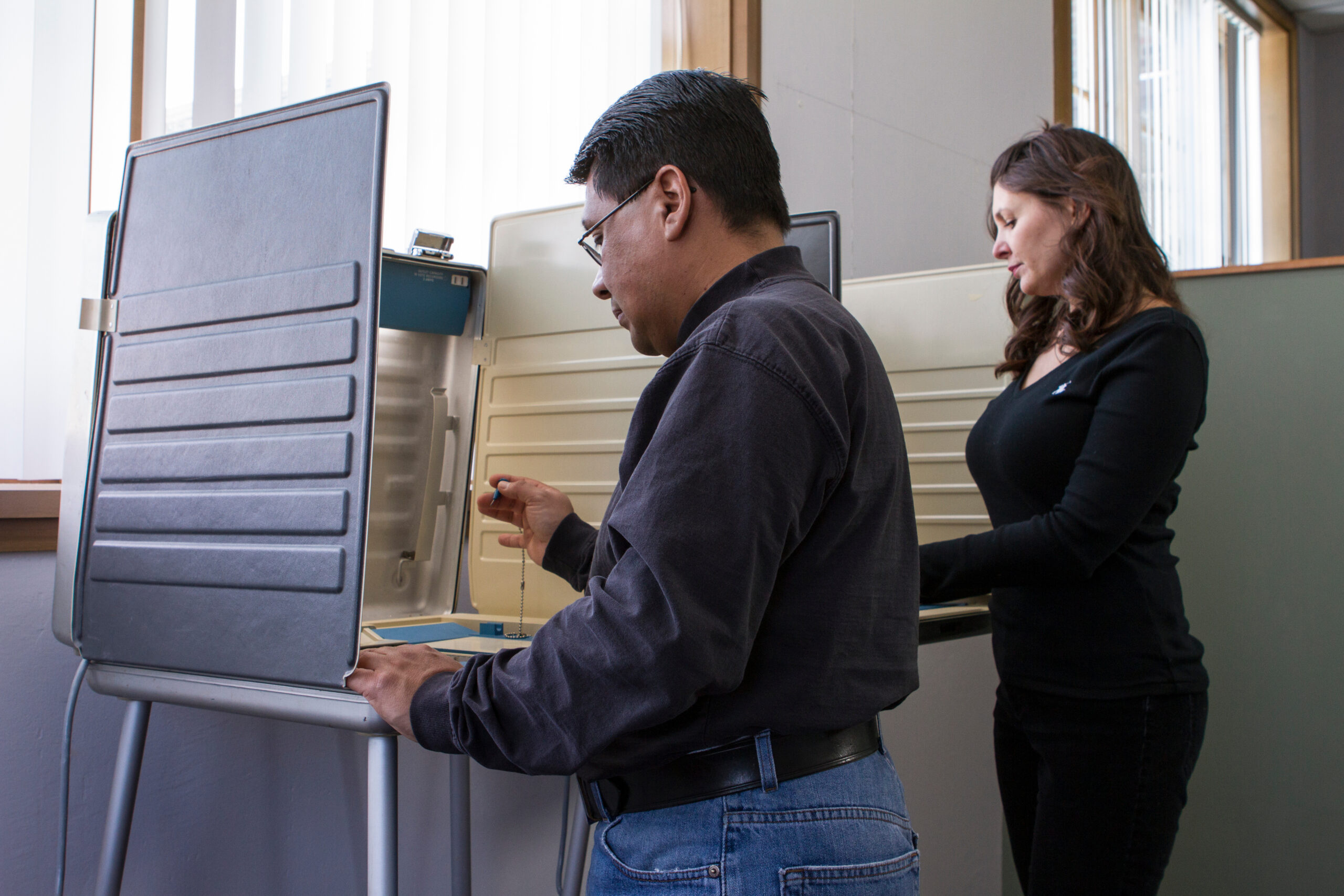Foundation Background and Mission
The California Community Foundation (CCF) is a vibrant and enduring resource committed to fulfilling the promise of Los Angeles County. CCF’s mission is to lead positive systemic change that strengthens Los Angeles communities. CCF envisions a future where all Angelenos have the opportunity to contribute to the productivity, health and well-being of our region.
If you see someone that’s hungry, you give them food to eat. But you also ask yourself what are the systems in place that are making them hungry?
Antonia Hernández, President & CEO, California Community Foundation
We’re not going to get to the housing and health outcomes we want if we’re not building power through organizations that care about the same goals as we do.
Diana Colin, California Community Foundation
The Approach
The California Community Foundation has built up its civic engagement portfolio which is focused on community-driven systems change. One of the top three buckets of the civic engagement program’s $1.2M budget is strengthening integrated voter engagement (IVE). The foundation’s IVE support includes investments in community power building through organizing, advocacy, and the implementation of policy wins. As part of their voter engagement focus, the foundation has supported several efforts to engage the local community:
- Research to understand civic deserts and low voter turnout: CCF conducted research to identify civic deserts where lack of infrastructure and participation compounded inequities and systemic problems. The foundation has used the research to invest in communities like South, East and Southeast LA, as well as the San Fernando, San Gabriel and Antelope Valleys to address the persistent problems of underinvestment and a lack of civic participation. In addition, the foundation has leaned into findings that Latinos remain the lowest voting bloc within LA County.
- Advancing ballot measures to catalyze change: Part of the foundation’s strategy is to invest in ballot initiatives that can catalyze systems change throughout the state. To support these measures, CCF has:
- Provided grants to conduct signature gathering for ballot measures and leveraged the foundation’s leadership to be a signatory on ballots measures
- Made c3 and c4 grants to organizations doing voter outreach
- Funded polling for ballot measures to understand public support and key messaging needs
- Served as strategic thought partners to coalitions and organizations and used its role as a foundation to bridge relationships
- Opened their space to host convenings
- Served as a contact for the media to advocate for the ballot measures
- Launching the PIVOT Power Building Pooled Fund which aims to raise $10-15 million to be spent over the next three years (2023-2026) to support California’s key power building innovations and infrastructure. Specifically, the fund will focus on infrastructure for organizing, narrative communications, and independent revenue generation. CCF serves as a steering committee member and their former civic engagement program officer serves as the director of the fund.
- Offering voter engagement training and capacity building: In 2022, the foundation hosted four trainings leading up to the June primary and four training sessions leading up to the November general on topics including script writing for voter contact, how to conduct volunteer recruitment, and how to navigate voter data and software tools, in addition to inviting the LA County Registrar to talk about the rights of voters. CCF partnered with other local foundations, including the Weingart Foundation, Liberty Hill Foundation, the United Way of Greater Los Angeles, and California Wellness Foundation, to invite their grantee partners and extend the reach of the training. The training sessions have been successful and CCF has already relaunched them for 2023.
- To deepen the impact of the training and inform their grantmaking strategy, the foundation sent a survey to the attendees asking them about their electoral plans. The majority of organizations responded that they needed $10,000 to 20,000 for their voter engagement programs. The foundation collaborated with Weingart Foundation and Liberty Hill Foundation – partner foundations from the training sessions – to provide $5,000 to $25,000 grants to 15 organizations to fill their budget gaps.
Best practices for integrating voter engagement into the fabric of your organization
- Embed values of civic engagement through the foundation – from the staff to the board. For CCF, systems change is deeply embedded in the foundation and it is a part of their strategic plan.
- Incorporate a team of community organizers on the foundation. In 2015, the foundation started to shift its focus to power building and subsequently hired community organizers that had a history of working on voter and civic engagement. These staff members were able to bring their existing expertise and organizing relationships to focus the foundation’s strategy and implement a theory of impact.
- Integrate your civic engagement and issue based foundation teams. While the civic engagement team focused on building the voter engagement strategy for homelessness ballot measures, they coordinated a collaborative handoff to the team that manages the housing portfolio once those measures passed. This collaboration has enabled the housing team to provide ongoing support and grants to the organizations involved in the implementation of the ballot measures.
- Explore c4 grantmaking possibilities with your legal team: The civic engagement team invited the foundation’s legal counsel to the Northern California’s c4 grantmaking learning series where they could hear directly from other foundations and experts about ways the foundation could leverage their position to support powerbuilding and systems change. This led to collaboration with their legal team on creative ways to use pooled funds to conduct c3 and c4 grantmaking and support lobbying.
- Activate your DAFs for voter engagement: CCF’s civic engagement team has initiated conversations with their donor relations team to ensure that voting programs are top of mind when assessing the donors giving interests.
- Fund early: For the 2024 cycle, CCF granted 80% of their budget in December 2022, providing organizations with early investment to build their capacity and implement their plans.
- Collaborate: With only $1.2 million allocated to the Civic Engagement portfolio, CCF actively advocates for its partner organizations within other funders’ spaces. One program officer reported that 60% of their time is spent working with other funders to direct more dollars to their grantee partners.







